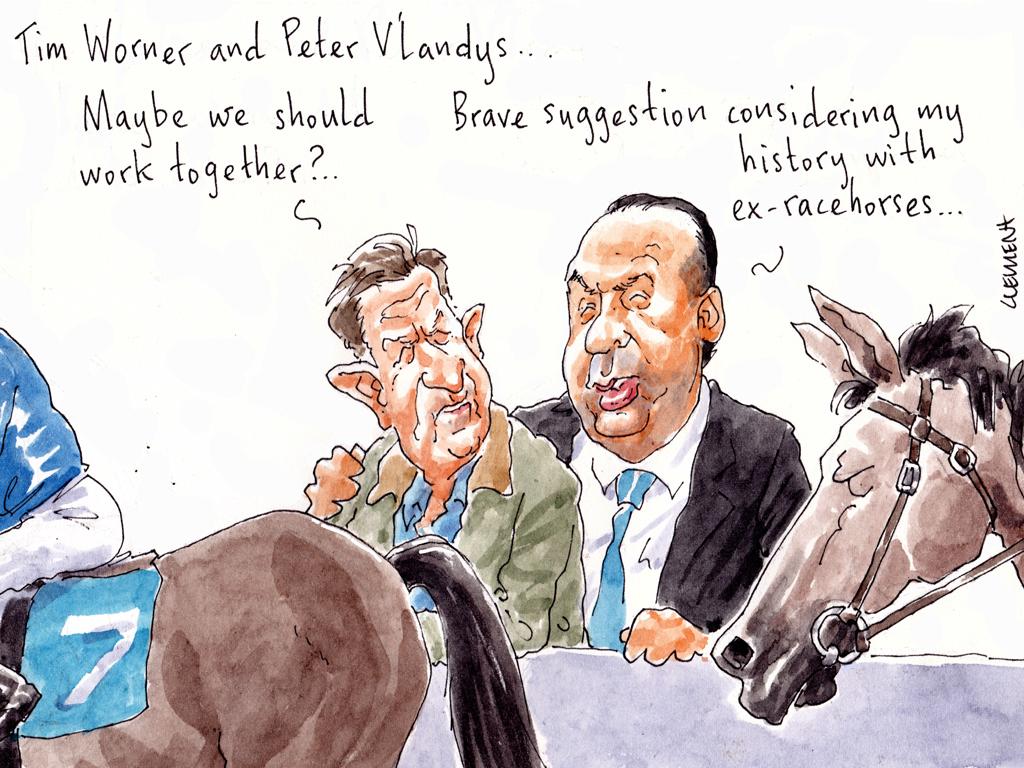Fast-tracking infrastructure and cutting taxes the wrong way to go

The government is under great pressure from economists, business people and bureaucrats, not to mention their own political instincts and the polls, to have a growth strategy in next month’s federal budget based on those two sets of “announceables” — projects and tax cuts.
But they are all generals fighting the last war. This is not a normal downturn, and the situation calls for different thinking, especially since Treasury and the RBA don’t seem to think much of Modern Monetary Theory, which means there is an arbitrary limit on the amount of money available for government spending. So priorities matter.
The Stage 2 and 3 tax cuts were going to cost $35.7bn in 2024. What they would cost if brought forward to 2021 and 2022 is anybody’s guess, but they’re expensive and presumably that will be money that can’t be spent on other things, since money doesn’t grow on trees you know.
Tax cuts during the long tail of a record-breaking recession will exacerbate inequality and will not “trickle down” and generate demand, growth and employment. The money will most likely be saved not spent.
Research by The Australia Institute shows that 91 per cent of the benefit of the next round of tax cuts goes to the top 20 per cent of income earners, while 4 per cent goes to the bottom half. None of the tax cuts gives any benefit to the bottom 20 per cent of taxpayers, who are the hardest hit by the pandemic.
The thinking is that the top 20 per cent who get most of the benefit will spend the extra cash and therefore create employment for the rest. But with unemployment forecast to be 9 per cent there’s not much chance of that: they’ll save, not spend.
Meanwhile, other vested interests are lining up to call for a $200bn burst of spending on major projects.
Australia is served by a cartel of three engineering construction companies protected by high barriers to entry; skilled construction workers are in short supply and well paid; and infrastructure spending by the states has already tripled from $5bn a year to $15bn. The infrastructure industry is already going flat out.
The only thing another big burst of spending is likely to do is drive up the profits of John Holland, CIMIC and Lendlease, along with the wages of their executives and workers. Sure, a few thousand people would get jobs on construction sites, but this is a capital-intensive business, not labour-intensive, and also not too many unemployed waiters, baristas, musicians and cleaners will be driving the cranes.
In any case, we are heading into a general oversupply of infrastructure, or rather underutilisation of what we have.
A lot of the infrastructure ideas centre around railways, either the big idea of high-speed rail from Melbourne to Brisbane or shorter fast lines from capital cities to nearby regional cities so people can commute between them and take pressure off capital city house prices.
But people are already moving to the country in droves: real estate agents in places an hour or so from cities are reporting an unprecedented level of inquiries. Regional house prices are already rising, against the capital city trend.
Faster railways aren’t needed to facilitate this — it’s happening because more people are working from home and doing their meetings on Zoom and Microsoft Teams. They don’t need to commute at all.
In fact, remote work is a massive, permanent trend that needs a lot of planning, and money, from government.
While a lot of white-collar workers will return to their offices when the pandemic is over, a lot won’t, either because they don’t need to, or because their employers don’t want them to, to save on rent.
Many thousands of businesses and their staff exist to serve the daily influx of white-collar workers into CBDs and other office hubs: restaurants, cafes, retailers, cleaners, car parks and public transport. It’s not that CBDs will be empty, abandoned forever, but the daily influx will be less.
Another item on the infrastructure pushers’ list is ports, except they’re mostly privatised and the government is picking a very serious fight with our major trading partner, so there could be fewer imports and exports for a while. Then there’s renewable energy, and a “green recovery” which sounds fine except we’ve got enough of it already: the grid is being swamped by intermittent solar and wind and the Australian Energy Market Operator is struggling to keep up. More storage is needed to smooth out the fluctuations and stabilise the grid, but Snowy 2.0 and the link to hydro storage in Tasmania are already happening.
What’s actually needed is for the political leaders to have the courage to resist the calls from vested interests that are doing fine already to splurge money on tax cuts and infrastructure, and instead to make sure there’s enough money to help those who fall through the very wide cracks.
This downturn is brutally uneven in its impact: economic statistics do not come close to conveying the depth of the damage and distress to those affected by it.
Surely the main jobs of governments are first to eradicate the virus to the extent possible, and second, make sure no one is left behind by the actions that they have taken to try to eradicate the virus and in particular, to ensure the businesses that had to close can be helped to open again.
To concentrate on those two things is enough and if done properly will require all the money they think is available.
Alan Kohler is the editor in chief of Eureka Report.







Infrastructure projects and tax cuts are the wrong things to focus government spending on as we come out of the pandemic.